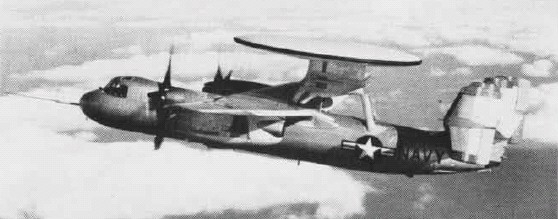Remembering D-Day: The Bedford Boys
 The small town of Bedford, VA lies in the mountain country of southwestern Virginia. Tracing its roots back to the earliest days of the country when it was established in 1782 as the town of Liberty, Bedford’s chief clam to fame lay in having served at one time as a Thomas Jefferson’s personal retreat (Poplar Grove), the Beale Treasure, and as a portal enroute to the small cities of Lynchburg and Roanoke. Outside of the local beauty of the mountains in that part of the Commonwealth, there was little else in the way of natural wealth and resources. Coal was extracted from the nearby mountains, farmers worked the poor soil to scratch out a living on the rolling, hilly terrain, desultory industries rose, flourished briefly and passed along - and in the town itself, the usual businesses could be found. The Depression had been especially hard on the populace of some 3200, though some elements of the many restoration and recovery programs from far away Washington DC would trickle in locally, like the nearby Blue Ridge Parkway, it barely scratched the surface. With war clouds on the horizon, the Virginia National Guard was activated and like many other small towns, Bedford contributed a company of soldiers who would go to war in places heretofore unimagined and unheard of.
The small town of Bedford, VA lies in the mountain country of southwestern Virginia. Tracing its roots back to the earliest days of the country when it was established in 1782 as the town of Liberty, Bedford’s chief clam to fame lay in having served at one time as a Thomas Jefferson’s personal retreat (Poplar Grove), the Beale Treasure, and as a portal enroute to the small cities of Lynchburg and Roanoke. Outside of the local beauty of the mountains in that part of the Commonwealth, there was little else in the way of natural wealth and resources. Coal was extracted from the nearby mountains, farmers worked the poor soil to scratch out a living on the rolling, hilly terrain, desultory industries rose, flourished briefly and passed along - and in the town itself, the usual businesses could be found. The Depression had been especially hard on the populace of some 3200, though some elements of the many restoration and recovery programs from far away Washington DC would trickle in locally, like the nearby Blue Ridge Parkway, it barely scratched the surface. With war clouds on the horizon, the Virginia National Guard was activated and like many other small towns, Bedford contributed a company of soldiers who would go to war in places heretofore unimagined and unheard of.
In other words, it was like many other towns scattered through out the nation. And like many across the land, those that could afford a radio, or knew someone or someplace that had one, on June 6th, 1944 they listened intently as news began to arrive of a massive invasion at a distant location called “Normandy.” From Bedford, Company A of the Virginia National Guard’s 116th Infantry assaulted Omaha Beach as part of the First Division’s Task Force Oscar.
As the morning of June 7th dawned, the telegrams began arriving.
In Bedford, nineteen would arrive (later an additional four from elsewhere in the Normandy Campaign would be added), staggering the small town’s residents. Everyone was touched in one way or another. Proportionally, Bedford’s losses were the highest in the nation.
One small town tucked away in the mountains – they gave so much for us all.
Captain Fellers lay with his boat team two hundred fifty yards from the D-1 Vierville draw. Jimmy Green had not been able to provide covering fire because his landing craft had bucked up and down too much in the heavy seas. There was only one thing to do – they would have to run for the nearest cover, making sure they did not bunch together to minimize casualties.
All along the bluffs above Omaha, veterans of the German 352nd Division lay in wait. They had moved into the area in recent weeks, relieving the inferior 716th Division. They totaled two regiments, almost two thousand men.
As Fellers and his men started to advance, German officers finally ordered their men to fire. Above the Vierville draw, the 352nd opened up with at least three MG-42 machine guns, firing over a thousand rounds per minute, and several mortars. Two dozen snipers lurked in nearby trenches. The slaughter was fast and merciless. Fellers and the twenty-nine men in his boat died in a matter of minutes, riddled by machine-gun bullets from several directions.
No accurate record exists of the boat roster for Company A on D-Day. It was probably lost with many others in the chaos and carnage after H-Hour. But it is thought that the following Bedford boys may have been among those who died within yards of their captain: twenty-two-year-old Sergeant Dickie Abbott; twenty-six-year-old Clifton Lee, the shy but fiercely patriotic private whose eyebrows arched dramatically above his pale face; twenty-three-year-old Gordon Henry White Jr. who dreamed of his mother’s cooking; the well-mannered Southern “gentleman” NickGillaspie; and the ace dice player, Wallace “Snake Eyes” Carter.
Less than fifty yards away, another LCA had also approached the beach. On board were George Roach, Thomas Valance, Gil Murdock, and the Bedford boys Dickie Overstreet and Master Sergeant John Wilkes. “We’re going to drop this ramp and as soon as we do, we’re going to back out,” shouted a British bowman, “so you guys better be ready.”
Chapter 11, “Dog Beach”, from the book “The Bedford Boys: One American Town’s Ultimate D-Day Sacrifice” by Alex Kershaw (Da Capo Press, 2004).


It was a good thought to put the D-Day Memorial there. But it sure didn’t make sense from a business standpoint, and now the National D-Day Memorial is wondering why people don’t travel 3-4 hours from DC to visit. Sigh.
http://www.msnbc.msn.com/id/31069702/